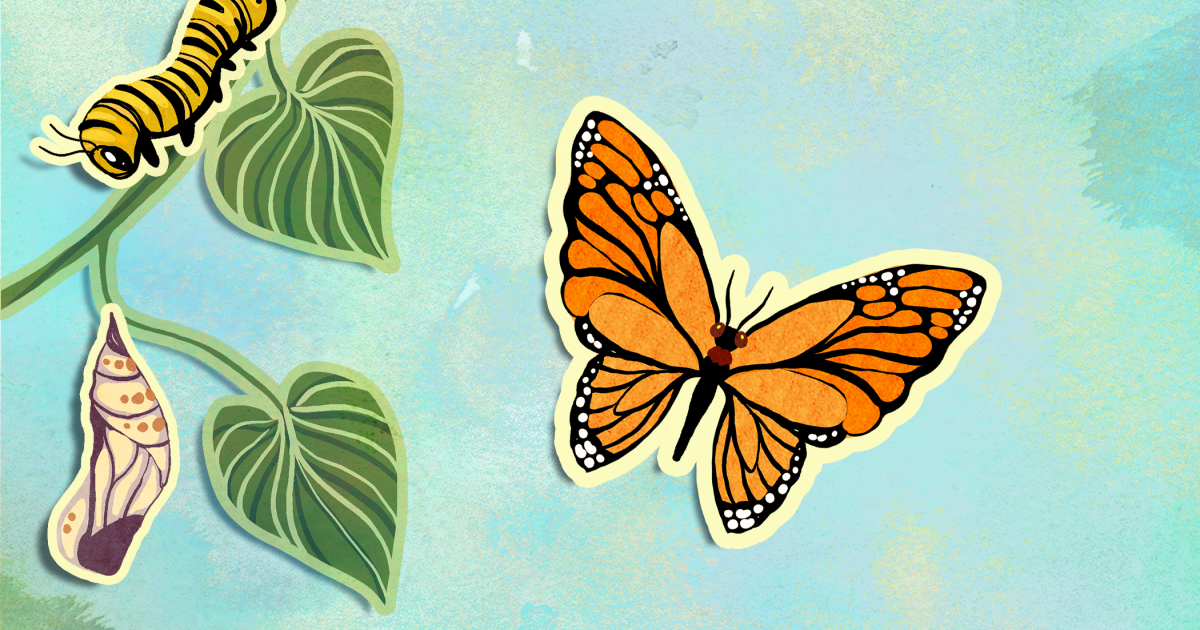
The butterfly life cycle is familiar: an egg hatches a caterpillar, which turns into a chrysalis from which a beautiful butterfly emerges. If you want a yard that attracts butterflies, you have to know what the needs of each stage are.
Eggs
Butterflies lay their eggs on the plants that are the best food for their offspring. Some butterflies will only lay their eggs on a single plant species; others are less choosy. But a butterfly-friendly yard must have plants that fit those needs. Once a caterpillar hatches, the first thing it eats is its egg, but then it moves on to the leaf of whatever plant it’s on.
Caterpillars
The job of the caterpillar is to eat, grow, shed its skin, and grow some more. It will do this up to five times before it sheds its skin for the last time to reveal the chrysalis. A space for butterflies will have just the right host plants available for the caterpillars. This also means the owners of the yard must tolerate holes in the leaves of their plants!
Chrysalises
Once the caterpillar has had its fill, it is ready to become a chrysalis, during which time the mysterious and beautiful transformation from caterpillar to butterfly occurs. Not to be confused with a cocoon (the silky encasing that moth larvae make around themselves), a chrysalis is itself the developing butterfly and needs to hang freely to develop properly. Caterpillars will climb up and under protected areas, so it’s helpful to have structures such as statues, a fence, trees, or woody shrubs in the yard.
Adult Butterflies
Adult butterflies have two things on their minds: mating and finding food. With a long proboscis (a straw-like mouth), they suck nectar from flowers for energy. Some butterflies, such as the great spangled fritillary and the meadow fritillary, will feed only on violet nectar, while the mourning cloak will feed on tree sap from willows, cottonwoods, birches, elms, white ashes, and basswoods. To increase the diversity of butterfly species in one’s yard, it’s important to have lots of plant species for them to choose from.
Winter
Butterflies need a place to overwinter. In northern Canada, where I live, we get lots of snow and very cold temperatures. Fallen leaves, loose bark, and sometimes even my shed are perfect places for these creatures to tuck in and survive the winter winds. If I clean up all the leaves and throw them away, I am removing next year’s butterfly crop, which is why I rake leaves only in the late spring—if at all—and always leave messy sections in my garden.
